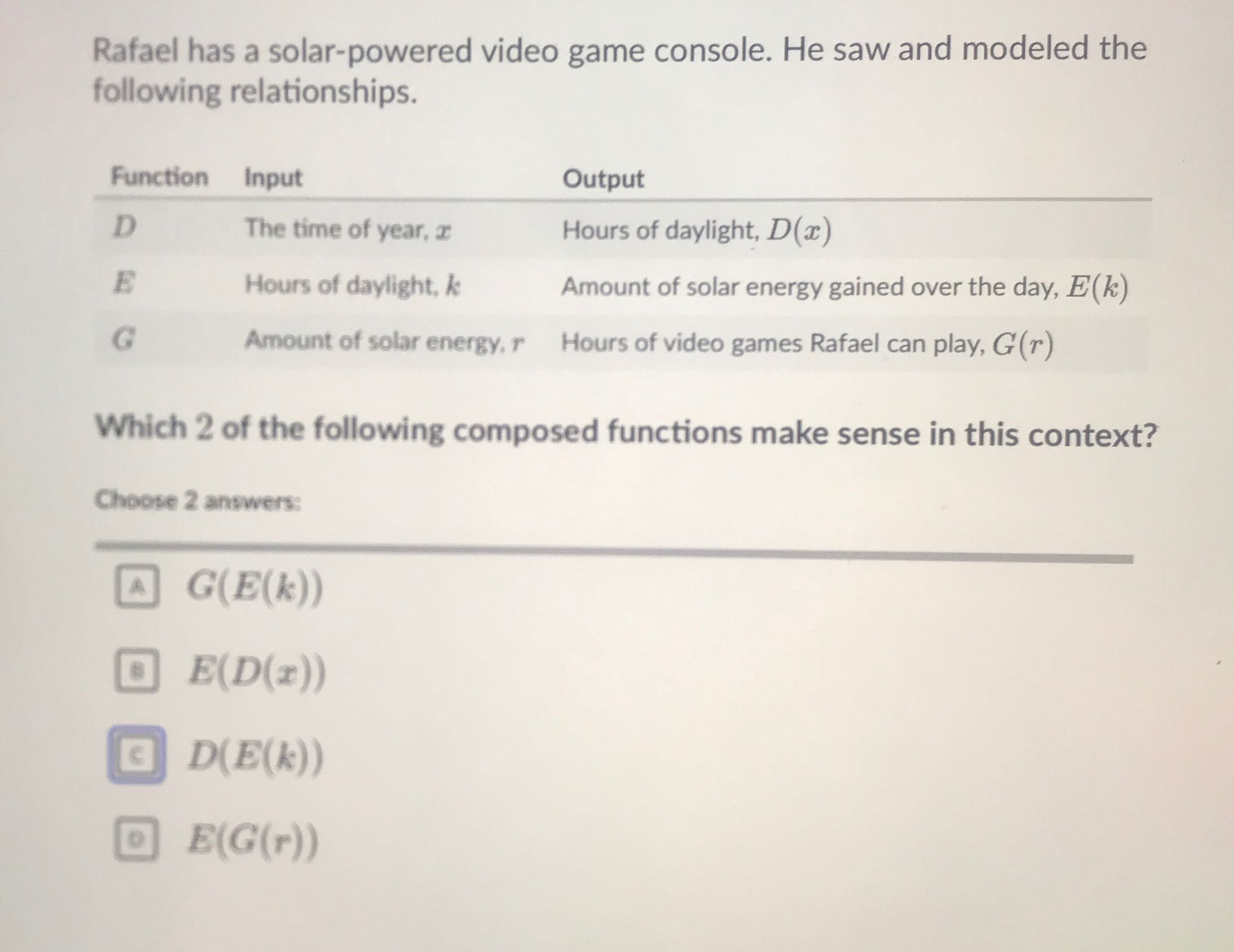AI tutor
Welcome to Bytelearn!
Let’s check out your problem:

Rafael has a solar-powered video game console. He saw and modeled the following relationships. Function Input Output D The time of year, Hours of daylight, E Hours of daylight, Amount of solar energy gained over the day, G Amount of solar energy, Hours of video games Rafael can play, Which of the following composed functions make sense in this context? Choose answers: (A) (B) (c) ()
Full solution
Q. Rafael has a solar-powered video game console. He saw and modeled the following relationships. Function Input Output D The time of year, Hours of daylight, E Hours of daylight, Amount of solar energy gained over the day, G Amount of solar energy, Hours of video games Rafael can play, Which of the following composed functions make sense in this context? Choose answers: (A) (B) (c) ()
- Identify Relationships: Identify the relationships between the functions. gives hours of daylight from the time of year. gives solar energy from hours of daylight. gives hours of video games from solar energy.
- Check : Check if makes sense. gives solar energy from hours of daylight. gives hours of video games from solar energy. So, means hours of video games from hours of daylight. This makes sense.
- Check : Check if makes sense. gives hours of daylight from the time of year. gives solar energy from hours of daylight. So, means solar energy from the time of year. This makes sense.
- Check : Check if makes sense. gives solar energy from hours of daylight. gives hours of daylight from the time of year. So, means hours of daylight from solar energy. This does not make sense.
- Check : Check if makes sense. gives hours of video games from solar energy. gives solar energy from hours of daylight. So, means solar energy from hours of video games. This does not make sense.
More problems from Compare linear and exponential growth
QuestionGet tutor help
QuestionGet tutor help
QuestionGet tutor help
QuestionGet tutor help
QuestionGet tutor help
QuestionGet tutor help
QuestionGet tutor help
QuestionGet tutor help
QuestionGet tutor help
